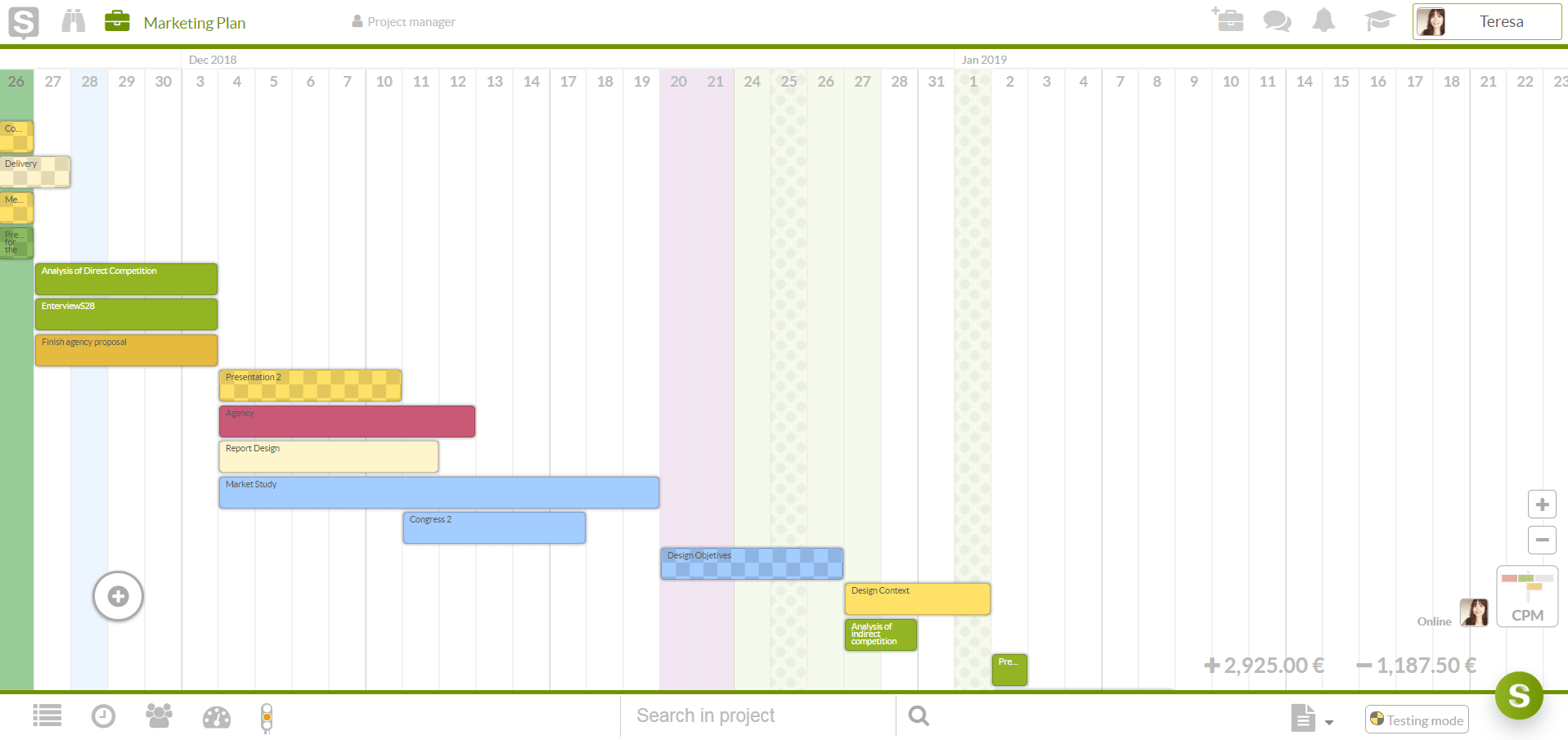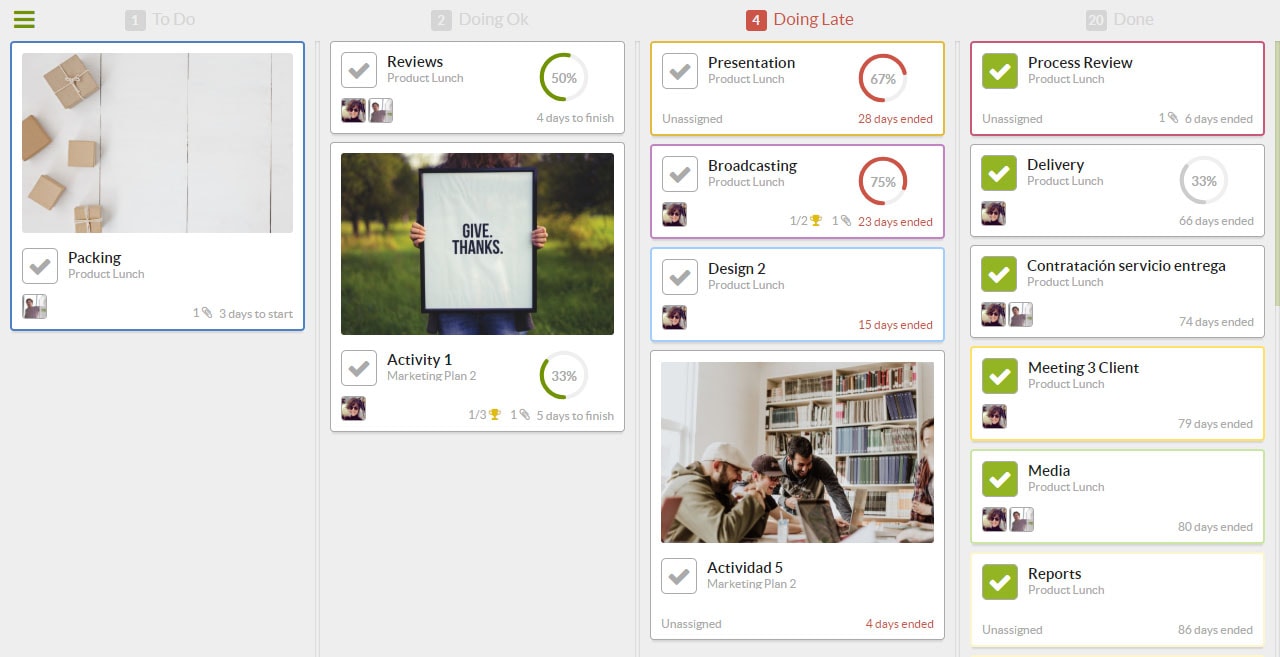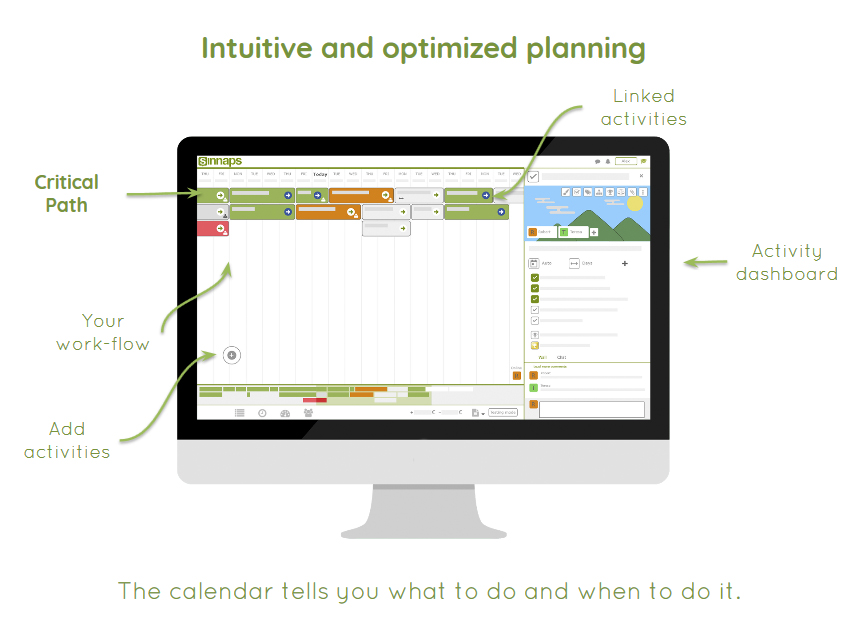Using Gantt chart and PERT chart in software engineering is a common practice – one that has been around for a while. They are most crucial in scheduling of all activities as it relates to the tasks to be performed by the software team. The most basic purpose of engineering Gantt chart being that which relates to effectively managing project scheduling information as well as oversee project statistics including tasks and the way they are to be carried out including precedence, etc.

Gantt timeline chart in software engineering consists majorly of two axes comprising the horizontal and vertical axes. While the horizontal represents project activities including but not limited to planning, designing, coding, testing and delivery, the vertical provides visual representation of the project duration in days, weeks, months and years.

Sinnaps Online Project Management Gantt charts provide software engineers different options for visually illustrating the critical paths of their projects. These include the use of convenient colour bars as well as different designs of bold face fonts, etc. With this great tool, project managers can easily see the resources available for each task as well as make room for more in such an event to keep the project from extending beyond finish time.
How to meet deadlines with this Gantt Chart:
Related links…
Online Project Management Report
Habits and app usage

Índice
Gantt Chart in Software Engineering
Software engineering life-cycle consist of a series of phases, from planning, designing, coding to testing and maintenance. Gantt chart in software engineering, for example helps to streamline the entire process, leading to greater results and delivery of expected product.
Let’s consider the various phases of software development and how Gantt charts can help in the overall project delivery.
- Planning: This is the process of gathering requirements for the project as well as performing different analysis on the information collected, including for example; the purpose of the product, who the end users are, and more for greater understanding of the product and also to resolve ambiguities which may hamper delivery of the product of the project as specified. Without a good plan, it may be a lot difficult to see the strengths and weaknesses of the project and progress.
- Analysis: This involves examining software performance at various stages to gather more information on additional requirements.
- Design: This basically includes developing or developing the architecture of the project. This process can be considered as one which sets the tone for the entire process, giving the team a standard to stick to.
- Coding: As soon as the design documents have been delivered to the developer, the actual phase of design implementation or coding begins. It consists of translating the software designs as provided into source codes, implementing all the components of the software.
- Testing: This is the stage where the software is assessed for errors, bugs or defects, and are fixed according to customer specification.
- Deployment: Once completed, the software is deployed for User Acceptance Testing (UAT) or in the production environment, after which it may deployed to go live.
- Maintenance: This stage takes care of issues, including fixing of bugs etc., that may be encountered during usage.
Since multiple design requirements can be traced in a single design element, it becomes essential to have a means for tracking all such requirements to ensure that all important elements are satisfied by the design model – this is where Gantt charts could come in handy.
Agile Dashboard for Software Engineers

Pert Chart in Software Engineering
The Programme Evaluation Review Technique, (PERT) in software engineering helps Gantt charts when it comes to project scheduling, organizing, and monitoring tasks within a project. Managers find this very helpful as it readily provides graphical illustration of projects as network diagrams consisting of numbered notes that represent different events including tasks and milestones in the project.

Project Scheduling in Software Engineering – Notes
As an organized and integrated management process, project planning focusses primarily on activities critical to the successful completion of a project.
Gantt charts finds many applications in software engineering. An example is the use of Gantt chart for final year project engineering, etc. Sinnaps is a web-based software, that provides managers and teams with all the necessary tools to complete their projects, be it I.T development projects or software engineering related projects.
Some of the advantages to be derived from the use of this software include:
- Easily define roles and responsibility of team members
- Ensure that the project team work according to project objectives
- Easily schedule tasks
- Monitor feasibility of the project schedule
- Easily view and resolve project constraints
In order to complete a project in software engineering, there are certain critical activities which must be performed. Firstly, it is essential to determine the tasks to be performed, as well ensure proper management of the same among individual and teams involved in the software development process. And what better way to do this than to make use of our all-inclusive project management tool. Why don’t you give it a try today? 😉

